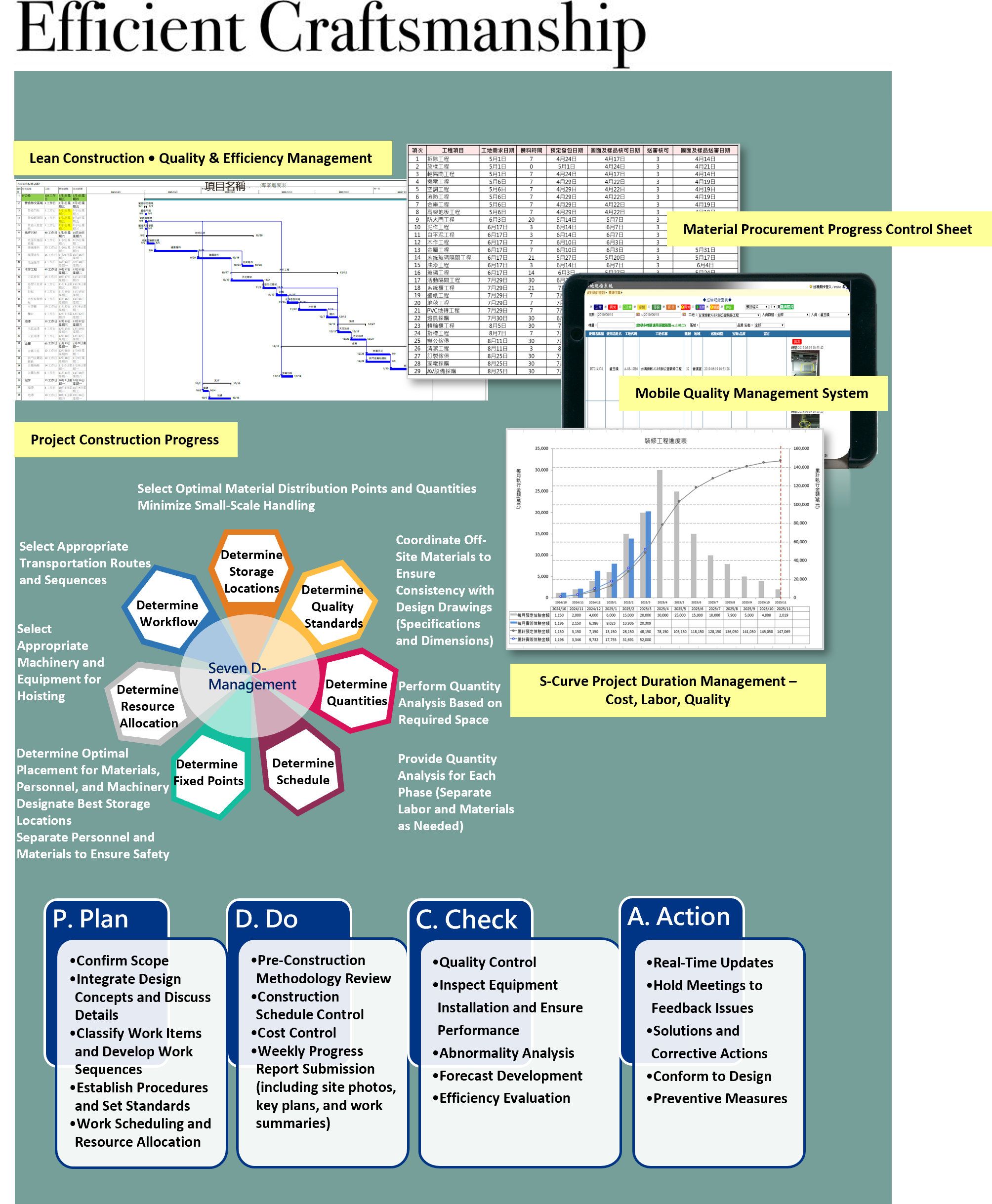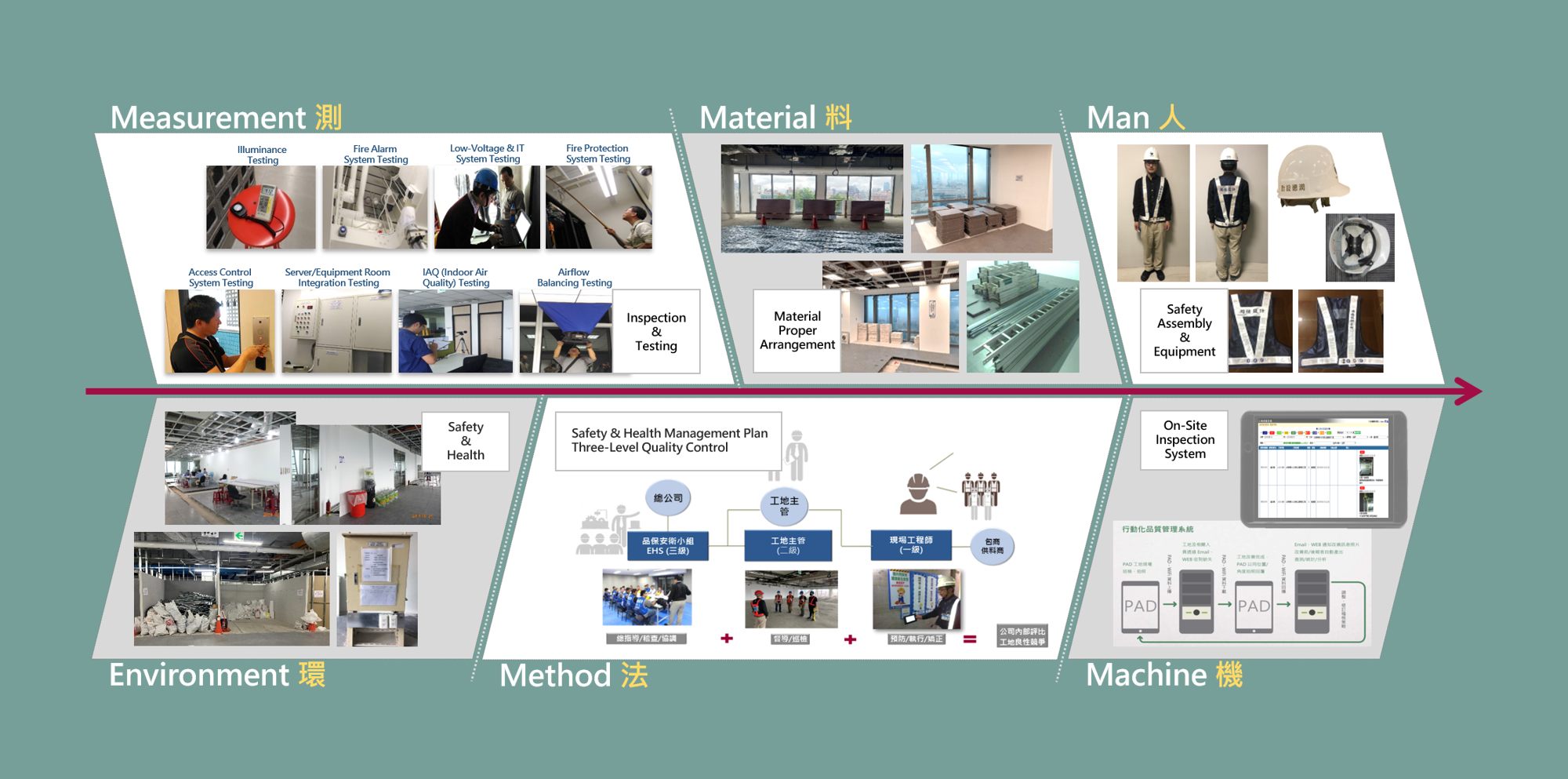|
A. Team Management
- Clearly define roles and responsibilities (e.g., project managers, supervisors, Work Crew).
- Establish effective communication mechanisms (regular meetings, instant messaging groups).
- Conduct training and performance evaluation concurrently (e.g., KPI system).
- Implement reward and penalty systems to enhance efficiency and quality.
B. Information Management
- Use digital tools to record on-site information (photos, notes, etc.).
- Manage documents in the cloud (design drawings, contracts, etc.).
- Ensure documents have numbering and version control.
- Maintain daily construction records and images to ensure transparency.
C. Schedule Management
- Use software to plan detailed construction schedules.
- Control smooth coordination of all key work sequences.
- Regularly review progress and make necessary adjustments.
- Prepare contingency plans to handle potential delays.
|
D. Construction Management
- Establish SOPs to ensure construction quality.
- Manage the inflow, outflow, and usage of materials and equipment.
- Supervisors conduct daily inspections and verify each task.
- Regularly compare budget vs. actual expenses to control costs.
E. Health & Safety Management
- Conduct regular occupational safety education and training.
- Enforce the use of personal protective equipment (PPE).
- Perform daily safety inspections on-site.
- Develop and implement contingency plans with drills (e.g., fire, work injuries).
|

